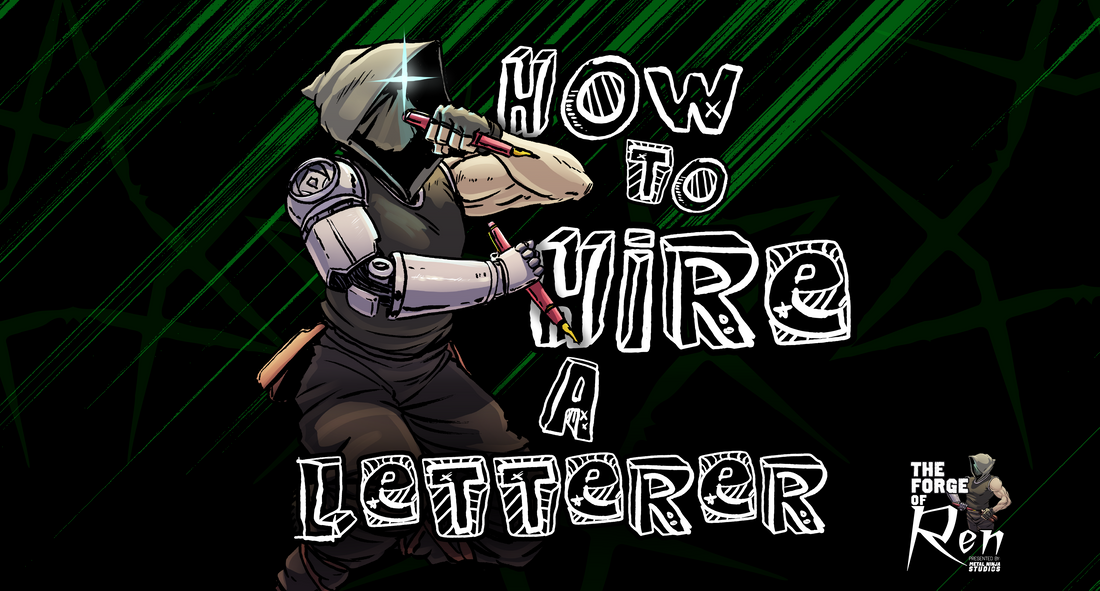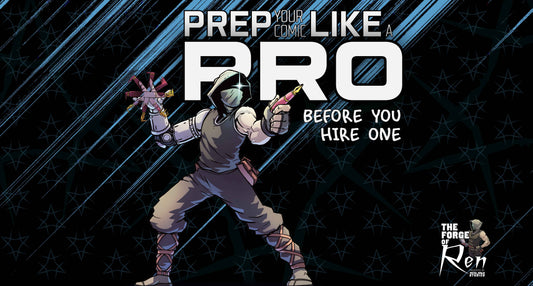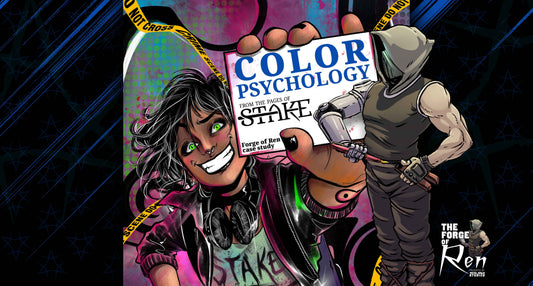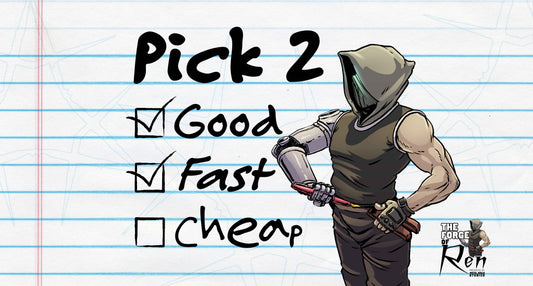Introduction
Lettering is more than just adding text to a comic book—it's an integral part of storytelling. A skilled letterer enhances the narrative's flow, complements the artwork, and ensures the story is accessible and engaging for readers. Choosing the right letterer can elevate your comic from good to unforgettable.
To help you find the perfect fit, we've compiled ten actionable tips for hiring a professional letterer. Whether you're new to comic creation or looking to streamline your process, these insights will guide you in making an informed decision.
1 - Review Portfolios Carefully
Start by examining the letterer's portfolio. Look for consistency, creativity, and versatility in their work. Pay attention to how their lettering integrates with previous projects' art style and tone. Ask yourself:
- Does the lettering enhance readability?
- Does it match the tone of the story?
- Are sound effects dynamic and engaging?
CLICK HERE to view the current Metal Ninja Studios production portfolio for review practice. Ask the questions above while examining the provided samples.
2 - Understand Their Style
Every letterer has a unique approach, but most professionals can adapt their style to fit a specific theme or genre. However, some may have a preference for certain types of comics. For example:
- A letterer experienced in horror might excel at creating eerie, atmospheric effects but may not be the best choice for a lighthearted superhero story.
Ask about their preferred genres and evaluate how their style aligns with your comic's tone.
Example A - Cartoony Lettering style by Metal Ninja Studios for Adventures of Byron by Chris Hamer

Example B - Gritty Lettering style by Metal Ninja Studios for Cherry Blackbird by Joseph Schmalke

3 - Request Samples
If you're unsure about a letterer's fit, request a short sample based on your script or artwork. Be prepared to offer compensation for the sample pages at their standard rate—it's ethical and professional. Despite being a business venture, some creatives feel uncomfortable discussing finances. By initiating the financial conversation in the sample phase by offering to pay for sample pages, you'll not only break the ice and invite the discussion but also prove to potential letterers that you value their time and start your potential working relationship from a better position.
Sample work shows how their lettering integrates with your project, helping you gauge adaptability and alignment with your vision.
4 - Check References and Testimonials
Reach out to previous clients or collaborators to gain insights into the letterer's reliability, communication skills, and ability to meet deadlines. Testimonials and online reviews can also be helpful, but direct conversations often provide more detailed feedback.
Questions to ask for references include:
- Were they easy to work with?
- Did they deliver on time?
- Were they open to revisions?

5 - Discuss Your Project Vision
Clear communication about your comic's genre, themes, and characters is essential. Share your vision with the letterer and ensure they understand how to enhance your storytelling.
For example, if your comic relies on dynamic action scenes, ensure the letterer can create impactful sound effects that amplify the excitement.
6 - Clarify Their Workflow
Understanding the letterer's process is crucial for a smooth collaboration. Key questions to ask include:
- How do you handle drafts and revisions?
- What's your timeline for delivering the final pages?
- How do you incorporate feedback?
Ensure the letterer's workflow aligns with your expectations and allows for flexibility.
7 - Understand Pricing and Budget
Professional lettering comes at a cost, but it's worth the investment. Discuss pricing structures upfront, whether they charge per page, project, or hourly. Keep in mind the adage:
"You can only pick two: Good, Fast, or Cheap."
If you want high-quality work delivered quickly, it won't be cheap. If you prioritize affordability and speed, the quality may suffer. Balance your budget with your project's needs to find the best fit.
8 - Evaluate Their Software and Tools
Ensure the letterer uses professional, industry-standard tools such as Adobe Illustrator or Clip Studio Paint. These tools provide the precision and compatibility needed for high-quality, print-ready results.
Additionally, inquire about their file delivery formats to ensure compatibility with your production process.
9 - Review Contracts and Deadlines
A clear, written contract is essential to ensure a smooth working relationship and avoid misunderstandings. Contracts can range from informal agreements via email or message to detailed formal documents. While simpler agreements may suffice for smaller projects, more comprehensive contracts are recommended for larger or long-term collaborations.
When drafting or reviewing a contract, include key elements such as:
- Deliverables: Specify what the letterer will provide, including page counts, formats, or additional services like proofreading.
- Timelines: Set clear deadlines for drafts, revisions, and final submissions to keep the project on track.
- Payment Terms: Outline payment schedules, milestones, and accepted methods.
- Revision Policies: Define how many revisions are included and whether extra changes incur additional fees.
The level of detail should reflect the scope and complexity of the project. For example, a one-off issue may need only a simple agreement, while an ongoing series requires more specificity.
If you're uncertain about contract details or legal terms, consulting a lawyer is a smart investment. A well-structured contract establishes clear expectations and provides peace of mind for both you and the letterer, setting the stage for a successful collaboration.

10 - Align on Communication Style
Effective communication is key to a successful collaboration. Ensure the letterer is responsive and open to working with your creative team, including writers, editors, and artists. Regular updates and a willingness to discuss feedback ensure a smoother process and fewer delays.
Conclusion
Finding the right professional letterer can transform your comic, ensuring it resonates with readers and stands out in the competitive market. From reviewing portfolios and discussing your vision to clarifying workflows and understanding budgets, these ten tips offer a comprehensive guide to making the best choice for your project.
Remember, the key is collaboration and clear communication. By valuing the letterer's expertise and fostering a strong working relationship, you'll set your comic up for success.
Ready to elevate your comic? Contact Metal Ninja Studios today for expert lettering services that deliver quality and creativity. Together, we'll craft a comic that leaves a lasting impression.




